By Maggie Tennis
January 2018
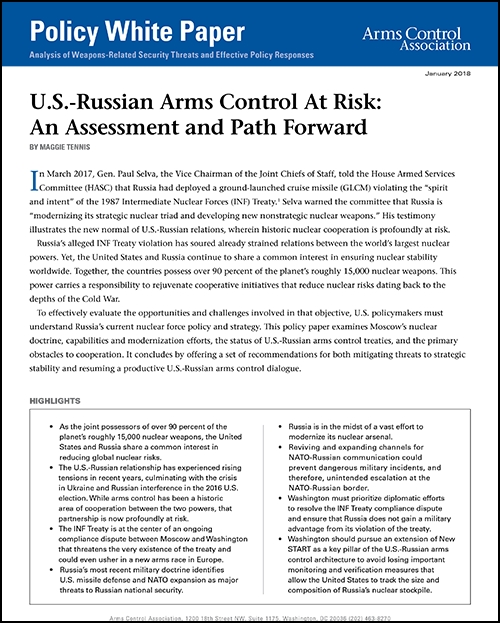 |
| Download PDF |
In March 2017, Gen. Paul Selva, the Vice Chairman of the Joint Chiefs of Staff, told the House Armed Services Committee (HASC) that Russia had deployed a ground-launched cruise missile (GLCM) violating the “spirit and intent” of the 1987 Intermediate Nuclear Forces (INF) Treaty.1 Selva warned the committee that Russia is “modernizing its strategic nuclear triad and developing new nonstrategic nuclear weapons.” His testimony illustrates the new normal of U.S.-Russian relations, wherein historic nuclear cooperation is profoundly at risk.
Russia’s alleged INF Treaty violation has soured already strained relations between the world’s largest nuclear powers. Yet, the United States and Russia continue to share a common interest in ensuring nuclear stability worldwide. Together, the countries possess over 90 percent of the planet’s roughly 15,000 nuclear weapons. This power carries a responsibility to rejuvenate cooperative initiatives that reduce nuclear risks dating back to the depths of the Cold War.
To effectively evaluate the opportunities and challenges involved in that objective, U.S. policymakers must understand Russia’s current nuclear force policy and strategy. This policy paper examines Moscow’s nuclear doctrine, capabilities and modernization efforts, the status of U.S.-Russian arms control treaties, and the primary obstacles to cooperation. It concludes by offering a set of recommendations for both mitigating threats to strategic stability and resuming a productive U.S.-Russian arms control dialogue.
Background
The longstanding tradition of U.S.-Russian dialogue and cooperation to reduce the dangers posed by nuclear weapons—dangers that their rivalry and possession of nuclear weapons created—has been critical to global security and the health of bilateral relations in general. Indeed, during the Cold War, collaboration on nuclear matters was often the only tether holding the relationship together. The global nonproliferation order is weakening. It cannot afford continued noncooperation between the world’s two largest nuclear powers.
Current pressures on the U.S.-Russian relationship
Perhaps the greatest source of tension between Moscow and Washington is a fundamental difference of perspective on the post-Cold War European and international order. The Kremlin views its loss of superpower status following the Soviet Union’s collapse, and subsequent exclusion from international decision-making, as a root cause of many global problems. Under the leadership of President Vladimir Putin, the country is focused on regaining regional and global influence. Russian possession of nuclear weapons is a crucial component of these ambitions.
Moscow feels entitled to a sphere of influence in the post-Soviet space at the same time that Washington maintains an orbit in Europe through NATO and its European alliances. As part of a quest to strengthen its influence in Eastern Europe and Central Asia, Russia is expanding and deepening its information warfare and foreign economic activities to further weaken Western liberal democracy in these regions. There is clear evidence of Russian interference in the 2016 U.S. presidential election, as well as in recent elections in France, the Netherlands, and Germany, with the intention of swaying the vote in favor of nationalist, populist candidates sympathetic to Russia.
Furthermore, Moscow is supporting pro-Russia authoritarian and oligarchic-style regimes and political movements throughout Eastern and Central Europe and Central Asia. Perceived attempts by Washington to interfere in that zone are sure to have exacerbated tensions with Moscow. An example is the eastward expansion of NATO, which Russia fears perhaps more than any other geopolitical threat.
Russia’s most recent military doctrine, published in 2014, explicitly identifies NATO expansion as a major threat to Russian national security. Russia has viewed the eastward expansion of NATO as a menace since before the Soviet Union fell—and especially since the 1999 NATO bombing of Kosovo. Moscow is highly critical of U.S. intervention in past conflicts in the Balkans and Middle East, and remains suspicious that NATO intends to destabilize incumbent regimes in the post-Soviet space. The Kremlin directly blames Washington for inciting uprisings in Georgia, Ukraine, and the Middle East.
In Ukraine, Moscow blames the Obama administration for encouraging the Maidan revolution and views U.S. policy toward Crimea as hypocritical. In Syria, Russia and the United States have disagreed on a range of issues, including the use of airspace, the future of the Bashar al-Assad regime, Syria’s use of chemical weapons, Iran’s role, how to fight the Islamic State, and which parties to the conflict constitute terrorist organizations.2
Finally, Moscow has amplified its muscular military signaling in recent years. In Ukraine and Syria in particular Russia has exercised nuclear sabre rattling and dangerous brinksmanship. Both countries have engaged in increased military exercises and force buildups on the NATO-Russia border.3
Arms control is not dead, but it’s wounded
Arms control is an area where Russia and the United States must cooperate, despite numerous tensions in their relationship. Yet, disagreements over treaties, missile defense, and approaches to nonproliferation have created additional challenges.
The INF Treaty is at the center of a significant and ongoing arms control treaty dispute between Moscow and Washington. In 2014 the United States accused Russia of testing a GLCM that violates that agreement. Then, in 2017, Washington alleged that Moscow had deployed the system. The Kremlin denies the allegations, and instead accuses the United States of violating the agreement. Mounting distrust on the treaty threatens to affect other hallmark agreements, such as the 2010 New Strategic Arms Reduction Agreement Treaty (New START).
New START requires that the United States and Russia each reduce their strategic nuclear forces to no more than 1,550 deployed warheads, 700 deployed delivery systems, and 800 deployed and non-deployed delivery systems by February 2018. The treaty is slated to expire in February 2021 but can be extended for another five years by mutual agreement by the two presidents. Since New START went into force in 2011, bilateral talks on further reductions have been put on hold amid a litany of U.S. and Russian disagreements in both the nuclear and non-nuclear realms.
Moscow is troubled by the expansion of U.S and NATO missile defenses, particularly the Aegis Ashore system in Romania and another planned site in Poland. While NATO argues that the intention of the system is “to protect European NATO allies, and U.S. deployed forces in the region, against current and emerging ballistic threats from the Middle East,” Moscow views the system as directed against Russia.4 Moscow’s perception is underscored by the fact that U.S. missile defense deployment planning did not change following the achievement of the 2015 Iran nuclear agreement, which curtailed the Iranian nuclear threat.
On the U.S. side, there is concern that Russia is lowering its threshold for nuclear use, thereby increasing the potential that regional conventional conflicts could escalate into catastrophic nuclear collisions. While it is certainly possible to interpret Russian nuclear doctrine in this way, American and Russian analysts debate whether Moscow has indeed incorporated limited strikes as part of its official military doctrine.
Despite these irritants, past cooperation between the two powers on New START and the Joint Comprehensive Plan of Action (JCPOA) to limit and roll back Iran’s emerging nuclear program indicates that future cooperation is possible.5 However, statements by the Trump administration suggesting that the United States might pull out of the JCPOA, as well as withholding a certification to Congress tied to the deal, have seriously harmed this potential and led Moscow to question Washington’s commitment to arms control and nonproliferation.
Furthermore, the bilateral risk reduction enterprise is under siege. Since the end of the Cold War, Washington and Moscow have worked in partnership to combat the threat posed by non-state actor access to nuclear weapons, but recently that collaboration has stalled.
Trump-era developments
Immediately following Donald Trump’s 2016 presidential victory, some believed that U.S.-Russian relations would rebound due to Trump’s admiration of Putin, his stated desire to improve ties, and Putin’s clear preference for Trump over Clinton. Yet, evidence of Russian election interference and support for Assad in Syria soon led Trump administration officials to expand their criticisms of Moscow. Congress has taken additional steps to put economic pressure on Moscow and constrain the president’s ability to engage.
Trump has yet to articulate a clear policy toward Russia, including on arms control. In January 2017, the administration announced plans to conduct a comprehensive review of U.S. nuclear weapons policy, posture, and planning. The release of this document, called the Nuclear Posture Review (NPR), is expected in February 2018. While Trump has expressed a desire to improve relations with Moscow, and on occasion professed that global nuclear weapons inventories should be significantly reduced, he has also publicly pledged to strengthen and expand U.S. nuclear capabilities. In a January 2017 phone call with Putin, Trump reportedly denounced New START and rebuffed Putin’s suggestion to extend the treaty.
In May 2017, White House and Kremlin officials stated that they would pursue resumed talks on strategic stability. The two sides held a first round of talks on September 12 in Helsinki, Finland, led by Thomas Shannon, undersecretary of state for political affairs, and Russian Deputy Foreign Minister Sergey Ryabkov, but the specific agenda has not been disclosed, nor has a date for the next round of talks been scheduled.
Congressional action could undermine U.S. relations with Russia
Republican hawks in Congress have introduced provisions that could jeopardize key arms control treaties, including the INF Treaty and New START. In an attempt to counter Russia’s INF Treaty violation, the fiscal year 2018 National Defense Authorization Act (NDAA) would provide funding for research and development on a new U.S. road-mobile GLCM with a range prohibited by the treaty.6
Nuclear policy of the Russian Federation
Russia published its most recent military doctrine in 2014. Although it discusses nuclear weapons and use, it is not meant to be the last word on Russian nuclear policy.
What the latest military doctrine says
The most recent version of Russian military doctrine identifies the past, present, and future expansion of NATO, and NATO activities “in violation of international law,” as a primary threat to Russian national security. Other main threats include the “creation and deployment of strategic missile defense systems,” which the doctrine argues “violate the balance of forces in the nuclear-missile sphere,” and the “deployment of strategic non-nuclear systems” and precision weapons. The document also references the weaponization of space and cyber and electronic warfare.7
Although Russia’s military doctrine demonstrates a view of the United States and NATO as aggressors in an evolving security environment, it also highlights the value of the arms control architecture and exhorts the military to “conclude and implement agreements in the area of nuclear-missile arms limitation and reduction.”8
The doctrine states that the purpose of Russia’s nuclear forces is to serve as a broad deterrent, and adds that Russia reserves the right to use:
“nuclear weapons in response to use against it and (or) its allies of nuclear and other weapons of mass destruction, as well as in the case of aggression against the Russian Federation with the use of conventional weapons, when the very existence of the state is
under threat.”9
Earlier versions of the doctrine described a lower standard for nuclear use, which prompted debates on concepts of de-escalation and pre-emption.10 There is now a near consensus view in Washington that Russian doctrine includes a so-called “escalate to de-escalate” strategy, whereby Moscow would use nuclear weapons on a limited basis to bring a conflict with a conventionally superior opponent to a halt.
Yet, the 2014 version does not mention de-escalation or legitimize pre-emptive strikes, and it is vague or silent about many aspects of nuclear use, including the scale of a nuclear response to an existential threat. It also does not include a no-first-use declaration, a policy Moscow abandoned in 2000.11
What the Russian government is saying and doing
The words and actions of the Kremlin and military officials provide additional context and insight into Russia’s military doctrine. In recent years, officials have emphasized the role of nuclear weapons in Russian defense strategy. Many recent prominent Russian military drills have included simulated nuclear strikes, including the September 2017 Zapad exercises, which featured two tests of the RS-24 Yars intercontinental ballistic missile (ICBM).
Kremlin leaders frequently draw attention to the strength of the arsenal in their public statements and, on occasion, have referenced it when issuing warnings to the West, such as the time Putin praised Russian nuclear weapons and said, “it’s best not to mess with us.”12 In 2009, Russia’s Deputy Prime Minister Dmitry Rogozin said, “we will certainly resort to using nuclear weapons in certain situations to defend our territory and state interests.”13 The 2003 Report of the Defence Ministry of the Russian Federation, known as the “Ivanov Doctrine” after then Defense Minister Sergei Ivanov, defined de-escalation as “forcing the enemy to halt military action by a threat to deliver or by actual delivery of strikes of varying intensity with reliance on conventional and (or) nuclear weapons.” The state press also regularly features headlines announcing the augmentation or improvement of an aspect of the nuclear arsenal.
These statements generate confusion among analysts as to whether Russia is truly lowering its threshold for nuclear use. Such ambiguity may ultimately be Moscow’s objective.
What analysts think about Russian doctrine
Western analysts frequently speculate on the conditions that would prompt Moscow to employ nuclear weapons. As noted above, military doctrine states that an existential threat would prompt Russia to employ its nuclear arsenal. However, it is unclear precisely what conditions Russia considers as constituting a threat to the existence of the Russian state, or how to measure the circumstances that would motivate Russia to escalate a conflict with limited nuclear strikes.14 Paul Bernstein, senior fellow for the National Defense University Center for the Study of Weapons of Mass Destruction, wrote in a 2016 report that Russia likely views any conflict involving NATO as posing an existential threat.15
Alexander Velez-Green of the Center for a New American Security (CNAS) argues that rapid technological advances, which “give far greater advantage to the side that escalates first,” have made it likely that Moscow would consider a first strike in a conflict situation.16 After analyzing Russia’s robust nuclear modernization program, some analysts note that many of its systems being upgraded have the capabilities needed to carry out “limited nuclear strikes against both military and non-military targets of value to the Western Alliance.”17 Russia has also improved its advanced non-nuclear capabilities, including theater-range precision strike systems,18 which could indicate a “pre-nuclear level of deterrence.”19
Then-Deputy Secretary of Defense Robert Work testified before Congress in 2015 that Russian nuclear doctrine contains a de-escalation strategy.20 But because the concept of de-escalation is not mentioned in public military doctrine, analysts debate whether the concept is formally part of Russian nuclear policy.
Eldridge Colby, currently Deputy Assistant Secretary of Defense for Strategy and Force Development, argued in a 2016 report for the Foundation for Strategic Research that Russia’s possession of the capabilities necessary for limited nuclear strikes, coupled with reports of limited nuclear strikes in recent military exercises, signal that Russia is lowering its nuclear threshold.21 Although de-escalation is not explicitly mentioned in military doctrine, the fact that senior military officials often reference the concept suggests it is part of Russian defense planning.
Conversely, Olga Oliker, senior adviser and director of the Russia and Eurasia Program at the Center for International and Strategic Studies, argues that because the purpose of military doctrine is to apprise adversaries of intention, it would be only logical to mention a lowering of threshold in the document if that were truly Moscow’s intention.22 Beyond doctrine, Oliker writes that there is “unconvincing” evidence that Russia invokes such a strategy, instead arguing that Moscow is more concerned with reminding the world that Russia has the power and capabilities to escalate—without actually intending to do so. The point is to keep NATO and Washington on their toes.23 Oliker says that recent Russian military exercises are meant “to test the readiness and command and control of Russia’s strategic nuclear forces,” and not as a “preparation for tactical use.”24
Russian nuclear capabilities in 2017: current status and modernization plans
While it is difficult to make a precise assessment of the size and composition of Russia’s nuclear stockpile, experts have been able to provide estimates using New START aggregate data and data from monitoring sources. Analysis from Hans Kristensen, Robert Norris, and Pavel Podvig indicate that, as of 2017, Russia owns a total military stockpile of operational forces of 4,300 nuclear warheads. Of these, 1,960 are deployed on ballistic missiles and at heavy bomber bases, and 500 strategic warheads and 1,850 non-strategic warheads are in storage.25 The military’s Strategic Rocket Forces (SRF) manages ICBMs, the Navy manages sea-based systems, and the Aerospace force manages air and missile defense systems.
Modernization plans and the State Armaments Programme (SAP)
Russia has pursued a major upgrade of its nuclear forces over the past decade. The vast scale of the program seems designed to counter perceived threats from the United States and NATO and maintain strategic stability.26 The program includes an emphasis on modernizing strategic nuclear and aerospace defense forces. Russian Defense Minister Sergey Shoigu said in 2017 that the military would “continue a massive program of nuclear rearmament, deploying modern ICBMs on land and sea, [and] modernizing the strategic bomber force.”27
Russia commenced the State Armaments Programme 2020 (SAP-2020) in 2011 to expand and upgrade the technology of the Russian Federation’s Armed Forces from 2011-2020. The stated goal of the SAP-2020 is to modernize 70 percent of Russian arms and equipment by 2020. But sanctions on Russia, a punishment for Russian aggression in Ukraine, have slowed the Russian economy—and with it, progress on the SAP. Despite economic concerns, Russia is modernizing all three legs of its nuclear triad.28 In a 2017 speech before the Ministry of Defense, Putin extended the deadline to 2021. In this address he stated that the Russian nuclear triad was 79 percent modernized, and that by 2021 ground-based nuclear forces would be 90 percent modernized.”29
Russia frequently justifies its nuclear force posture by signaling a need to defend against U.S. missile defense and conventional strike capabilities and keep up with the pace and scope of U.S. nuclear modernization. Russian Foreign Ministry Director of Nonproliferation and Arms Control Mikhail Ulyanov remarked in 2014 on ongoing U.S. modernization plans, declaring that Russia would “take corresponding countermeasures to ensure our security.”30 Regarding modernization, it should be noted that the Russian program began before that of the United States.
Putin said in 2016, “It is necessary to strengthen the combat potential of the strategic nuclear forces, primarily for missile systems capable of and guaranteed to overcome the existing and future missile defense system [of the U.S.]”31 Russia is building new ICBM systems equipped with multiple independently targetable reentry vehicles (MIRVs) and maneuverable warheads to counter the U.S. missile defense program.
Budget and cost estimates of Russia’s nuclear program
According to the U.S. Defense Intelligence Agency, Russia plans to spend approximately $28 billion by 2020 on upgrades to its strategic nuclear triad. The budget for SAP-2020 was initially planned with a much higher GDP growth rate than was actually achieved. When oil prices fell from the expected $50 per barrel to under $35 per barrel and GDP stalled, the military was forced to make budget cuts of up to 10 percent for each ministry. These cuts hampered modernization plans.32 At the same time, the defense budget continues to grow at a higher rate than the national GDP, likely due to the lobbying power of the Russian defense industry and the government’s strong commitment to modernization.33 However, U.S. defense spending still far outpaces that of Russia.
Russia announced plans to spend approximately 20.7 trillion rubles ($704 billion) on the SAP-2020 in 2011, although Western analysts believe 19 trillion rubles to be a more realistic figure.34,35 First Deputy Defense Minister Vladimir Popovkin, who oversees the SAP, said that the bulk of the funding would go to developing eight nuclear-powered strategic submarines equipped with the Bulava missile system, modernizing ICBMs, purchasing precision weapons, and building a heavy-liquid ICBM.36 By 2015, Russia had procured only 30 of 400 desired ICBMs and submarine-launched ballistic missiles (SLBMs), two of eight desired ballistic missile submarines (SSBNs), 11 of 56 S-400 missile defense systems, and two of 10 desired Iskander-M tactical ballistic missile brigades.37 Actual Russian spending in 2015 for the nuclear complex was roughly 44 million rubles. In 2016, it was 46 million.38
The Defense and Finance Ministries put forward competing proposals to fund the SAP-2025 for the years 2018-2025. The Defense Ministry proposed a 24 trillion ruble budget, while Finance proposed a budget of half that amount, at 12 trillion.39 The two ministries will need to reconcile these figures to produce a budget for approval.40
The intercontinental ballistic missile (ICBM) force
As of March 2017, Russia’s stockpile includes an estimated 316 intercontinental ballistic missiles (ICBMs) carrying 1,076 warheads. Russia is increasing its arsenal of ICBMs equipped with multiple warheads, possibly to account for a smaller ICBM force than that of the United States. By the early 2020s, most mobile Russian ICBMs are expected to carry ballistic missile payloads containing multiple warheads.
The Russian ICBM force includes the Topol (SS-25), Topol-M (SS-27 Mod 2), RS-24 Yars (SS-27 Mod 2), UR-100NUTTH (SS-19), and R-36M2 (SS-18). The latter two are the oldest ICBMs in the arsenal. The R-36M2 is likely to remain in service until 2022, when it will be replaced by a new silo-based liquid-fuel ICBM, called Sarmat. Development of the RS-24 Yars began after the Strategic Arms Reduction Treaty (START) expired in 2009. It is a MIRVed variation of the Topol-M. The RS-26 Rubezh (no SS- designation), Sarmat (no RS- or SS- designation), and Barguzin are in development.41
The Russians are retiring Soviet-era ICBM systems in order to gradually replace older systems with newer systems by the early-to-mid 2020s.42 The new ICBMs are MIRVed, road-mobile, and silo-based—mainly variants of the Topol-M/RS-24 Yars missile. The road-mobile RS-26 Rubezh is planned for deployment in late 2017 and the Sarmat will replace the RS-20V in 2019 or 2020, although it is behind schedule. The Sarmat is expected to be a liquid-fueled missile equipped with as many as 10 MIRVs, and may carry a hypersonic maneuvering warhead. It will be able to attack U.S. targets by multiple trajectories, thereby allowing it to overcome U.S. missile defense systems.43
The Defense Ministry had announced the development of five regiments of a rail-based ICBM, called “Barguzin.” Testing was planned for 2019, and deployment, by 2020.44 Each regiment was to contain six missiles. An ejection test was reported in November 2016.45 However, it was reported in December 2017 that the program had been canceled.46
The ballistic missile submarine (SSBN) and submarine-launched ballistic missile (SLBM) force
The Russian force contains 11 operational submarine-launched ballistic missiles (SLBMs) across three classes, including the Delta III and Delva IV classes, with a total of 176 missiles carrying 768 warheads. Each submarine can carry 16 SLBMs, for a total of almost 800 warheads. Russian SLBMs include the R-29R (RSM-50, SS-N-18 Stingray), R-29RM Sineva (RSM-54, SS-N-23), RSM-56 Bulava (SS-N-32), and, according to some sources, a version of the RSM-54 known as the R-29RMU2 Lanier.
Russia is developing eight Borey-class submarines to replace the ageing Delta III and IV submarines in the mid-2020s, three of which have already been built. The first three are Borey and the additional submarines are Borey-A. The fourth submarine will be introduced in 2019 and the last should join the fleet sometime in 2021. Each will be loaded with sixteen Bulava SLBMs carrying up to six warheads per missile.47
The bomber force
Russia maintains a bomber force of approximately 68 aircraft. Only 50 of the deployed nuclear-cable bombers carry assigned nuclear weapons. Of the estimated 68 planes, approximately 25 are TU-95 MS6 (Bear-H6) long-range bombers, 30 are TU-95 MS16 (Bear-H16) long-range bombers, and 13 are Tu-160 (Blackjack) supersonic long-range bombers. They are capable of carrying nuclear air-launched cruise missiles (ALCMs). As strategic heavy bombers they are subject to New START limitations. The Russian air force also operates a multipurpose medium-range supersonic bomber, the Tupolev Tu-22M, which is considered a tactical nuclear delivery platform for various types of cruise missiles. It is not limited by New START.48
Russia is reportedly replacing its current fleet of Tu-95’s, Tu-160’s, and Tu-22M’s with a new generation of strategic bombers by the early 2020s. These fleets are being upgraded to increase their conventional capabilities. In 2015, the Defense Ministry revealed plans to resume production of the Tu-160M2, an upgrade to the Tu-160, in the mid-2020s.49 It reportedly signed a $103 million contract to upgrade three of the 10 Tu-160 bombers slated for modernization.50 Over the next decade, Russia is also developing a new generation bomber called the PAK-DA.
Nonstrategic nuclear weapons
The Russian nonstrategic arsenal totals 2,000 weapons, including short-range surface-to-surface missiles, air-to-surface missiles and bombs, nuclear-armed torpedoes, depth charges, and surface-to-air missiles for air defense. At least 760 warheads are used by the Russian Navy.51 About 570 nonstrategic weapons are used by the air force.52
Moscow currently has a far larger arsenal of non-strategic weapons than the United States, although Moscow might say that it is more accurate to count U.S. non-strategic weapons in combination with those of France and the United Kingdom, thus reducing the asymmetry. None of these forces are limited by treaties. The Congressional Commission on the Strategic Posture of the United States, co-chaired by former Secretaries of Defense William Perry and James Schlesinger, found this imbalance to be “worrisome to some U.S. allies in Central Europe.”53
Russia is developing dual-use systems, weapons that can be deployed in nuclear and conventional variants. Both the Kalibr sea-based cruise missile, which has an intermediate range, and the Iskander ground-based ballistic missile represent this type of weapon. Moscow is nearing full deployment of the potentially nuclear-capable Iskander-M system, which comprises short-range ballistic and cruise missiles, to replace Tochka-U missiles.
According to Pavel Podvig, director of the Russian Nuclear Forces Project, the development of dual-use systems is worrisome from a stability perspective. He writes that the systems are capable of “blurring the line between nuclear and nonnuclear weapons.”54 The U.S. European Command 2017 Posture Statement declared that “Russia’s fielding of a conventional/nuclear dual-capable system that is prohibited under the INF Treaty creates a mismatch in escalatory options with the West.”55
Early-warning system upgrades
Russia is upgrading its strategic force support systems, such as early-warning launch detection satellites and ballistic missile early-warning radars. The SAP called for as many as 10 new early-warning satellites by 2020. These had fallen behind U.S. capabilities after the Soviet collapse.56 Three new early-warning radars were planned to become operational in 2017 as part of an upgrade program to Russian early-warning systems. Russia began deployment of a new early-warning space-based system, known as EKS, in 2015. Satellites of these systems can transmit information in real time to command centers at western and eastern locations.57 According to Shoigu, in 2017 Russia will achieve full coverage of its perimeter through a “continuous radar field of warning systems for missile attack on all strategic air and space directions and on all types of trajectory of ballistic missile flights.” This achievement is a result of the three new radars beginning combat duty, as well as upgrades to three older radars.58
Russia’s missile defense capabilities and modernization
Despite Moscow’s fierce criticisms of the U.S. missile defense program, Russia is expanding and upgrading its air and missile defense systems. Russia exports many of these systems abroad. The A-135 ballistic missile defense system has been operational around Moscow since 1995, after replacing the 1970s-era A-35 Galosh system. Russia operates several families of air defense systems, each consisting of multiple variants and upgrades. These include the S-300P, S-300V, and S-400 systems. The S-500 system is in development.59
The S-300P (SA-10 Grumble/ SA-20 Gargoyle) is comparable to the U.S. Patriot PAC-3 system. The PMU-2 version introduced the 58N6E2 missile, which is capable against short-range ballistic missiles (SRBMs) and medium-range ballistic missiles (MRBMs).60,61
The S-300V (SA-12/SA-23) is also comparable to the U.S. Patriot PAC-3 system. It can intercept both SRBMs and MRBMs. An unknown number of systems were deployed to Syria beginning in 2015.62
The S-400 “Triumph” (SA-21 Growler) was designed as an upgrade to the S-300 family. It entered service in 2007, but production has been slow. The system is purportedly capable of intercepting ballistic missiles with a range of around 3,000 km; however, the intercept would have to take place in the atmosphere, making its defense capabilities limited. An unknown number of these systems are deployed in Syria.63
The S-500 “Prometheus” is in development to be a comprehensive anti-ballistic missile system that works in conjunction with the S-400. This system extends the engagement envelope of Russian air defenses beyond an altitude of 30 km, making it an “air / space defense system.” It is currently undergoing testing. Russian defense officials claim that the system will be capable of defending against ICBM attacks.64
The A-135 Moscow missile defense system was designed to protect Moscow. It comprises the Radar Don-2NP, a stationary, all-around, multi-purpose surveillance centimeter-range radar station, the command-and-control center, shooting complexes including 12-16 silo launchers of anti-missiles, and high-speed 53T6 interceptors that operate at the terminal trajectory phase and are nuclear-armed.65 The A-135 is aimed at intercepting ICBMs and SLBMs. The system’s upgrade project, called the A-235 Nudol, will employ a new, conventional version of the 53T6 missile with a longer range and higher accuracy.66 As part of the missile defense system, Russia has located 68 nuclear-tipped ballistic-missile interceptors near Moscow. For comparison, the United States deploys 44 anti-ballistic missile interceptors in Alaska and California.67,68,69
Obstacles to arms control
The INF Treaty dispute
The INF Treaty required the United States and Soviet Union to eliminate and permanently forswear all nuclear and conventional ground-launched ballistic and cruise missiles with ranges of 500 to 5,500 kilometers. The treaty led the countries to destroy a total of 2,692 short-, medium-, and intermediate-range missiles by the 1991 deadline.70 Yet, beginning in 2014 Washington has accused Russia of violating the treaty by testing, and as of 2017, deploying, a GLCM with a prohibited range.
The Trump administration says the Russian system of concern is the SSC-8 ground-launched cruise missile, which, according to the U.S. government, uses the Russian designator 9M729. Because Washington has not been transparent to the public about the violation, very little is known about the noncompliant system. Some have speculated that it is a ground-based version of the Kalibr missile, while others believe that the illegal missile is a follow-on to the R-500/SSC-7 Iskander missile. The SSC-8 is likely capable of targeting major European and east Asian cities, respectively, from Russia’s far western and eastern bases.71
Analysts have suggested various possible rationales for Russia’s development and deployment of the noncompliant system. Analysts point to a desire to enhance theater strike capabilities, increase the survivability of its forces, and destabilize NATO. Moscow’s concern over a security environment in which other nuclear-armed countries are not party to the INF Treaty may also be fueling the violation.72 That disadvantage is a main reason why Moscow has sought to multilateralize the INF Treaty.
In addition to denying U.S. allegations, Moscow has raised its own concerns about Washington’s compliance with the agreement. Russia charges the United States with the following practices: placing a missile defense launch system in Europe that can be used to fire cruise missiles, employing targets for missile defense tests that have similar characteristics to treaty-prohibited intermediate-range missiles, and developing armed drones that are seemingly equivalent to ground-launched cruise missiles.
In November 2016, the United States called a meeting of the Special Verification Commission (SVC), an implementing body established by the INF Treaty to resolve compliance issues. The meeting in Geneva was attended by Belarus, Kazakhstan, Russia, Ukraine, and the United States. There, the United States provided detailed information to Moscow about its allegations of Russian noncompliance.73 The meeting yielded little progress toward resolving the compliance dispute. A second meeting of the SVC took place from December 12-14, 2017, but little information from that session has so far emerged.
The 2017 State Department compliance report repeats past accusations of Russian treaty noncompliance. It claims that the United States has provided Russia with information on the offending missile, such as details regarding the internal designator for the mobile launcher chassis, names of companies involved in developing and producing the missile and launcher, history and coordinates, and documented Russian efforts to obfuscate the program.74 The Russian Foreign Ministry responded to that report by reiterating a complaint it has made in the past that Washington had provided only “odd bits and pieces of signals with no clarification of the unfounded concerns.”75
Washington’s reluctance to provide explicit detailed evidence—including evidence it claims to have already given to Russia—has stymied productive discussion around resolving the compliance dispute. Ultimately, compliance concerns only heighten feelings of distrust on both sides. Without a solution for adequately addressing each side’s concerns—and returning Russia to compliance—it will be difficult for Moscow and Washington to make progress on other arms control issues.
On December 8, 2017—the 30th anniversary of the signing of the INF Treaty—the Trump administration announced what it called an integrated strategy for dealing with the Russian violation. The strategy reaffirmed the U.S. commitment to preserving the treaty and said the United States would (1) continue efforts to seek a diplomatic settlement of the Russian violation, including through the Special Verification Commission; (2) begin research and development on options for conventionally-armed intermediate-range ground-launched missile systems; and (3) impose economic sanctions on Russian entities that had taken part in development and production of the SSC-8.76
To extend or not to extend New START?
Aggregate data from September 2017 demonstrates that Russia has decreased its deployed strategic warheads by 235 in the past 12 months. Russia now has 501 deployed delivery systems and 1,561 deployed strategic nuclear warheads—only 11 warheads over the New START limit of 1,550 warheads.
Both countries are on track to fulfill New START limits by the February 5, 2018 implementation deadline, and there are no indications of either side straying from their obligations. In December 2017 Russian Ambassador to the United States Anatoly Antonov confirmed that Russia would meet its New START limits on schedule.77 As the deadline approaches, Russia has signaled interest in commencing talks on extending the treaty. The Trump administration has yet to respond to these overtures.
Trump’s ambivalence toward New START and efforts by Congressional Republicans to link its extension to resolution of the INF Treaty dispute mean that the treaty could expire in 2021 with nothing to replace it—a dire result.
Third-Country nuclear forces
Although other nuclear-armed countries have arsenals amounting to less than five percent of the size of the Russian and American arsenals, Russia still seeks the institution of limits on these arsenals and the inclusion of other nuclear countries in the arms control regime. In fact, even during INF Treaty discussions, Moscow strongly advocated for extending negotiations to UK and French forces, and continued to call for the inclusion of France and the United Kingdom in subsequent arms control talks with Washington.78 In 2013, the Kremlin advocated for the multilateralization of future arms reductions. At the nuclear Nonproliferation Treaty Review Conference in 2015, the Russians stated that multilateral negotiations among all nuclear-armed states are necessary to make progress on disarmament.79 Russia has yet to table a specific proposal for expanding the arms control process.
The United States does not believe that the relatively small size of third-country nuclear forces warrants inclusion in the next round of arms reductions. It is possible that the United States would be open to multi-lateralization in the future, if and when the size of U.S. and Russian nuclear arsenals has been more significantly reduced. But at the present time, this issue is yet another on the list of disputes hampering U.S.-Russian cooperation.
U.S. missile defense in Europe
Russia has expressed strong objections to U.S.-NATO missile defense systems in Europe. Moscow worries that the European Phased Adaptive Approach (EPAA) could challenge the strength of Russia’s nuclear deterrent, especially after future modernization projects are completed.
Putin remarked in 2016 that “we were assured that the missile defense system and its European segment were designed to protect against Iranian ballistic missiles. However, we know that the situation with the Iranian nuclear issue was resolved…and nevertheless, work on a [U.S.] missile defense system continues.”80 Kremlin officials have also claimed that U.S. missile defense systems lower the threshold for nuclear use. Russian Foreign Minister Sergey Lavrov said in 2017, “the anti-missile umbrella may increase the illusion of invulnerability and impunity and lead to temptation of taking unilateral steps in the resolution of global and regional problems, including the reduction of threshold of nuclear weapons use.”81
Incentives for Russian engagement on arms control
The current tensions in the U.S.-Russian relationship would seem to preclude agreement on a major new arms control accord in the near term. But resuming an arms control dialogue with Washington should be attractive to Moscow for many reasons.
First, participating in arms control efforts with the United States cements Russia’s status as a great power. By being party to treaties that enshrine Russia and the United States as equal actors, Russia can portray itself as a global influencer on par with the United States.
Secondly, the verification provisions contained in treaties like New START allow Russia to monitor U.S. nuclear forces and then factor that knowledge into nuclear planning. If Washington and Moscow were to fail to agree to extend New START, Russia would likely be displeased with the loss of limits and transparency on U.S. forces.
Thirdly, active participation in the arms control regime benefits Moscow during a time of economic uncertainty and unrest at home. Arms control reduces the need to finance expansive nuclear modernization projects, which frees funds for use elsewhere.
Finally, Russian military doctrine explicitly declares a commitment to arms control and nonproliferation. To be true to its doctrine and legacy of bilateral nuclear cooperation, Russia must reengage with the United States on nuclear risk reduction.
Recommendations for U.S. policy
The poor state of the U.S.-Russian nuclear relationship demands prioritizing measures that are feasible in the near-term in order to build a productive, durable dialogue on arms control. These measures include improving the NATO-Russian relationship, resolving the INF Treaty dispute, and extending New START. Ultimately, engaging in meaningful talks on strategic stability between the United States and Russia must be a priority for Washington if it wishes to heal its nuclear partnership with Moscow.
Strengthen the NATO-Russia relationship
Russia is undeniably anxious about the expansion and conventional force superiority of NATO, which may be driving increased Russian sabre rattling, emphasis on nuclear weapons, and even the decision to test and deploy a GLCM prohibited by the INF Treaty. The NATO-Russian question begs for resolution.
Reviving and expanding channels for NATO-Russian communication could mitigate Russian unease. Communication is essential in order to prevent dangerous military incidents, especially in the Baltic region where tensions are extremely high. Preventing incidents will help to prevent unintended escalation—a critical need, given concerns about the possible Russian use of nuclear strikes to turn the tide of conventional conflicts. Establishing direct military contacts and independent bodies that assess and respond to military confrontations could help prevent conflict.82
Russia and NATO must implement mutual restraint measures, such as those laid out in the NATO-Russia Founding Act (NRFA),83 which could alleviate concerns on both sides of the border. The NRFA should be reviewed and updated to address current needs. The NATO-Russia Council is one possible forum for dialogue, but it might be more useful to establish a similar body that is solely focused on nuclear-related matters. Either way, it is critical that there be a space for Russian and NATO representatives to openly discuss the factors affecting security and strategic stability.
The two sides should prioritize options to resolve destabilizing force imbalances, particularly in the common border area. Their discussions should also explore regulations on tactical nuclear weapons, which have not yet been included in the bilateral arms control process. NATO could also reaffirm its commitment under the NRFA to carry out defense activities by “ensuring the necessary interoperability, integration, and capability for reinforcement rather than by additional permanent stationing of substantial combat forces.” Finally, a decision by Washington to unilaterally reduce the size of the U.S. nuclear arsenal could push Moscow to reevaluate the size and scope of its next SAP.84
Resolve the INF Treaty dispute
The preservation of the INF Treaty is a crucial safeguard against the advent of a destabilizing arms race in the region. Therefore, Washington and Moscow must urgently address their disagreement regarding the treaty compliance of both countries. The United States should prioritize a diplomatic approach while working to ensure that Russia does not gain a military advantage from its violation.
The Deep Cuts Commission, a group of nuclear experts from the United States, Russia, and Germany, recently published a plan of action for addressing the INF Treaty dispute.85 The plan requests that Russia allow U.S. experts to examine the disputed Russian GLCM. If the United States concludes that the missile is indeed violating the treaty, the paper recommends convening the SVC or a similar independent panel of U.S. and Russian experts to discuss destroying the illegal missiles and launchers to return Russia to compliance.
The Deep Cuts Commission proposal suggests that Washington address Moscow’s concerns over U.S. compliance by negotiating revisions to the treaty language to account for drones and the use of booster stages in target missiles for ballistic missile defense. To satisfy Russian concerns, the authors recommend that the United States alter the land-based version of the Mk-41 launcher to clearly differentiate it from the Mk-41 systems placed on U.S. warships, and institute transparency mechanisms that allow Russia to verify that the launchers in Romania and Poland only contain SM-3 interceptors.
If the INF Treaty does collapse, Washington must ensure that Russia shoulders the blame. This means avoiding steps—such as building a new U.S. missile—that would simultaneously raise red flags among NATO allies and enable Russia to claim that the United States is cultivating nuclear instability.
Extend New START as soon as possible
Given the value of New START to U.S., Russian, and global security, the Trump administration should waste no time in accepting Russia’s offer to extend the treaty. If the treaty is allowed to lapse with nothing to replace it, there will be no limits on Russia’s strategic nuclear forces. Furthermore, the United States will lose the important monitoring and verification measures that allow Washington to keep an eye on the size and composition of Russia’s nuclear stockpile.
The deterioration of the U.S.-Russian relationship has only increased the value of New START. By verifiably capping U.S. and Russian deployed nuclear forces, the treaty bounds the current tensions between the two countries. This is especially important because other key pillars of the U.S.-Russian arms control architecture, like the broader bilateral relationship, are under siege. Failing to respond to Moscow’s invitation to discuss an extension of New START would be a major missed opportunity to ensure continued stability and predictability in the strategic relationship.
Make the most of strategic stability talks
During the Cold War, the Americans and Soviets understood “strategic stability” to mean a security environment in which neither side had an incentive to launch a nuclear first strike. To achieve that end, they collaborated on implementing measures to govern strategic nuclear weapons, missile defense, and air defense.
It is urgent that Washington and Moscow resume such discussions, beginning by agreeing on a shared definition of “strategic stability” to meet the current threat environment. To do so likely entails expanding the agenda of the talks, which should feature key arms control agreements, namely the INF Treaty and New START, as well as missile defense, third-country nuclear forces, and advanced conventional weapons. Without a renewed commitment to strategic stability talks, it will be difficult to improve nuclear cooperation between Russia and the United States.
The first round of renewed U.S.-Russian strategic stability talks began September 12, 2017 in Finland. Following the meeting, U.S. State Department spokeswoman Heather Nauert said that “the discussions provided both sides with an opportunity to raise questions and concerns related to strategic stability and also to clarify their positions on that matter.” The two delegations agreed to continue implementing New START arms reductions to meet the February 2018 deadline. Conversations focused on extending New START will need to follow quickly if such an extension is to be achieved.
It is important that this round of talks yield other rounds in the near future. Although Lavrov commented pessimistically in October 2017 that the global community should not expect “considerable results in the foreseeable future”86 from the U.S.-Russian strategic stability talks, the very resumption of dialogue is a significant step forward. An important outcome of the talks would be a reaffirmation by the leaders of Russia and the United States of the 1985 declaration made by U.S. President Ronald Reagan and Soviet Leader Mikhail Gorbachev that “a nuclear war cannot be won and must never be fought.”
Conclusion
The United States and Russia must commit to continual dialogue if they wish to address the different perceptions and misperceptions on both sides of the relationship that are harming nuclear cooperation. Even in the bleakest moments of the Cold War, Washington and Moscow were able to cooperate on arms control. If both countries put aside their differences to embark on further nuclear force reductions, they could reduce threats and save billions of dollars. Healing relations and enhancing national and global security requires productive discourse and true dedication to reducing nuclear weapons.
Washington cannot control Moscow, but it can formulate smart policy in regard to its nuclear forces and diligently seek tough and pragmatic cooperation with the Kremlin. To make that possible, the Trump administration must articulate a clear policy toward Russia, as well as strategies to reduce nuclear risks. Congressional support will be necessary to achieve these goals. Rather than hasten the unraveling of several longstanding nuclear risk reduction efforts, the Trump administration and Congress should maintain and reinforce existing arms control and nonproliferation measures.
Finally, American and Russian officials must tone down harsh rhetoric and capitalize on issue areas where they do agree. Unfortunately, the internal politics and foreign policies of both countries continue to shrink potential areas of cooperation. But the relationship has weathered hazardous tensions and even near-catastrophes in the past, with Washington and Moscow able to maintain nuclear cooperation during their darkest days. Today’s leaders must learn from their predecessors and prioritize nuclear risk reduction, or face a more uncertain and dangerous future.
ENDNOTES
1 Michael Gordon, "Russia Has Deployed Missile Barred by Treaty, U.S. General Tells Congress," The New York Times, Mar. 8, 2017.
2 Rajan Menon, "What’s Russia Doing in Syria and Why," Huffington Post, accessed September 7, 2017. Mythili Sampathkumar, "Syria war: Tensions between America and Russia escalate as countries clash over drones and airspace," Independent, June 20, 2017. Bryony Jones and Nic Robertson, "Syria talks: What Russia and the US agree and disagree on," CNN, Sep. 8, 2016.
3 Thomas Frear and Denitsa Raynova, "Russia-West Military Incidents: Skirting the Law," European Leadership Network, December 7, 2016.
4 "What You Need to Know About Aegis Ashore Romania," U.S. Naval Forces Europe-Africa/ U.S. 6th Fleet, May 11, 2016, http://www.c6f.navy.mil/news/what-you-need-know-about-aegis-ashore-romania
5 Kelsey Davenport, Daryl G. Kimball, and Greg Thielmann, "Solving the Iranian Nuclear Puzzle: The Join Comprehensive Plan of Action," Arms Control Association Briefing Book, August 2015, https://www.armscontrol.org/reports/Solving-the-Iranian-Nuclear-Puzzle-The-Joint-Comprehensive-Plan-of-Action/2015/08/Section-3-Understanding-the-JCPOA
6 Kingston Reif, "Hill Wants Development of Banned Missile," Arms Control Today, December 2017.
7 "The Military Doctrine of the Russian Federation," December 25, 2014.
10 Olga Oliker, "Russia’s Nuclear Doctrine: What We Know, What We Don’t, and What That Means," Center for Strategic and International Studies, May 2016.
11 Serge Schmemann, "Russia Drops Pledge of No First Use of Atom Arms," The New York Times, Nov. 4, 1993. Vladimir Mamontov, "Меняется Россия, меняется и ее военная доктрина (Russia is changing, and its military doctrine is also changing," Izvestia, Oct. 14, 2009.
12 Colin Freeman, "Vladimir Putin: Don’t mess with nuclear-armed Russia," The Telegraph, Aug. 29, 2014.
13 David Nowak, "Russia reserves right to conduct preemptive nuclear strike: Say US, NATO pose threat of aggression," Boston Globe, Oct. 15, 2009.
14 Paul Bernstein, "Countering Russia’s Strategy for Regional Coercion and War Workshop Report," National Defense University, March 2016. Elbridge Colby, "Russia’s Evolving Nuclear Doctrine and its Implications," Center for a New American Security, January 12, 2016. https://www.frstrategie.org/publications/notes/russia-s-evolving-nuclear-doctrine-and-its-implications-2016-01
15 Paul Bernstein, "Countering Russia’s Strategy for Regional Coercion and War Workshop Report,"National Defense University, March 2016
16 Alexander Velez-Green, "The Unsettling View from Moscow: Russia’s Strategic Debate on a Doctrine of Pre-emption," Center for a New American Security, April 27, 2017.
17 Elbridge Colby, "Russia’s Evolving Nuclear Doctrine and its Implications," Center for a New American Security, January 12, 2016, https://www.frstrategie.org/publications/notes/russia-s-evolving-nuclear-doctrine-and-its-implications-2016-01, Dave Johnson, "Nuclear Weapons in Russia’s approach to conflict," Fondation pour la Recherche Strategique, November 2016.
20 Adm. James Winnefeld and Robert Work, Statement Before the House Committee on Armed Services, June 25, 2015.
21 Colby, 2016. https://www.frstrategie.org/publications/notes/russia-s-evolving-nuclear-doctrine-and-its-implications-2016-01
25 Hans M. Kristensen and Robert S. Norris,"Russian nuclear forces, 2017."
26 Mark B. Schneider,"Russian Nuclear Weapons Policy," RealClearDefense, April 28, 2017.
27 Schneider, 2017. Putin urges Russian navy to prioritize nuclear force buildup," New China, April 26, 2017.
28 U.S. Defense Intelligence Agency,"Russia Military Power: Building a Military to Support Great Power Aspirations.""Рогозин заявил о подготовке новой госпрограммы вооружений к сентябрю (Rogozin announced the preparation of a new state arms program by September)," Lenta, July 3, 2017.
29 President Vladimir Putin, Address at expanded meeting of the board of the Ministry of Defense, December 22, 2017.
30 Alexei Druzhinin,"Russia developing new nuclear weapons to counter ‘potential threats to military security’ from NATO," National Post, Jan. 24, 2015.
31 President Vladimir Putin, Address at expanded meeting of the board of the Ministry of Defense, December 22, 2016.
32 Steven Pifer,"Pay Attention, America: Russia Is Upgrading Its Military," The National Interest, Feb. 3, 2016. Science and Technology Committee,"Russian Military Modernization," NATO Parliamentary Assembly, October 11, 2015.
33 Gudrun Persson et al.,"Russian Military Capability in a Ten-Year Perspective—2016," Swedish Defence Research Agency, December 2016.
35 Ibid. Yuri Gavrilov,"‘булава’ к концу года (Bulava by the end of the year)," The Russian Newspaper, Feb. 25, 2011.
37 Science and Technology Committee,"Russian Military Modernization," NATO Parliamentary Assembly, October 11, 2015.
38 Gudrun Persson et al., 2016.
39 "СМИ: Минобороны требует увеличить вдвое финансирование вооружения (Media: Defense Ministry demands doubling the financing of weapons)," Red Line, July 4, 2016. Keir Giles,"Assessing Russia’s Reorganized and Rearmed Military," Carnegie Endowment for International Peace, May 4, 2017.
40 Gudrun Persson et al., 2016.
41 Correspondence with Pavel Podvig. Hans M. Kristensen and Robert S. Norris,"Russian nuclear forces, 2017.""Arms Control and Proliferation Profile: Russia," Arms Control Association Fact Sheet, updated March 2017, https://www.armscontrol.org/factsheets/russiaprofile. U.S. Defense Intelligence Agency,"Russia Military Power: Building a Military to Support Great Power Aspirations," 2017
42 Hans M. Kristensen,"Russian Nuclear Weapons Modernization: Status, Trends, and Implications," Federation of American Scientists, September 29, 2014.
43 Ibid. Kristensen and Norris, 2017. Malcolm Davis,"Russia’s New RS-28 Sarmat ICBM: A U.S. Missile Defense Killer?," The National Interest, Feb. 15, 2017. Shannon N. Kile and Hans M. Kristensen,"Trends in World Nuclear Forces, 2016," Stockholm International Peace Research Institute (SIPRI), June 2016.
44 Pavel Podvig,"Flight tests of Barguzin rail-mobile ICBM are said to begin in 2019," Russian strategic nuclear forces blog, Jan. 19, 2017. Schneider, 2017."Russia to Conduct Flight Tests of Missile for ‘Nuclear Train’ in 2019," Sputnik, Jan. 19, 2017.
45 "Эксперт: Ракета БЖРК «Баргузин» успешно стартует с железнодорожной платформы (Expert: Barguzin BZHR rocket successfully starts from the railway platform)," Defence.ru, Nov. 21, 2016.
46 Pavel Podvig,"Barguzin rail-mobile ICBM is cancelled (again)," Russian strategic nuclear forces blog, Dec. 4, 2017.
47 Kristensen, 2014. Kristensen and Norris, 2017.
48 Kristensen and Norris, 2017.
49 Kristensen, 2014. Kristensen and Norris, 2017.
50 "Russian Defense Ministry Signs $100 Mln Deal to Overhaul 3 Tu-160 Bombers," Sputnik, July 26, 2013.
51 U.S. Defense Intelligence Agency,"Russia Military Power: Building a Military to Support Great Power Aspirations."
52 Kristensen and Norris, 2017.
53 William J. Perry and James R. Schlesinger,"America’s Strategic Posture: The Final Report of the Congressional Commission on the Strategic Posture of the United States," United States Institute of Peace, 2009.
54 Pavel Podvig,"Blurring the line between nuclear and nonnuclear weapons: Increasing the risk of accidental nuclear war," Bulletin of the Atomic Scientists, May 3, 2016. Amy F. Woolf,"Nonstrategic Nuclear Weapons," Congressional Research Service, February 21, 2017. Matthew Kroenig,"The Renewed Russian Nuclear Threat and NATO Nuclear Deterrence Posture," Atlantic Council, February 2, 2016.
55 United States European Command, EUCOM 2017 Posture Statement, March 23, 2017.
57 Pavel Podvig,"Early warning," Russian strategic nuclear forces blog, Aug. 15, 2017."Шойгу: по периметру России создано сплошное радиолокационное поле систем предупреждения" (Shoigu: a continuous radar field of warning systems has been created along the perimeter of Russia)," Defence.ru, Dec. 22, 2016.
58 Pavel Podvig,"No gaps in early-warning coverage as three radars to begin combat duty in 2017," Russian strategic nuclear forces blog, Dec. 23, 2016.
59 "Основная продукция военного назначения (Major military products)," Концерн ВКО «Алмаз – Антей. http://www.almaz-antey.ru/catalogue/millitary_catalogue/
60 Correspondence with Pavel Podvig
61 "Основная продукция военного назначения (Major military products)," Концерн ВКО «Алмаз – Антей. http://www.almaz-antey.ru/catalogue/millitary_catalogue/
62 "Основная продукция военного назначения (Major military products)," Концерн ВКО «Алмаз – Антей. http://www.almaz-antey.ru/catalogue/millitary_catalogue/
63 Correspondence with Pavel Podvig
65 Dmitry Gorenburg,"Valdai Club 3: Touring the Don-2N Radar Facility," Russian Military Reform blog, June 2, 2011.
66 Pavel Podvig,"Russia Tests Nudol Anti-Satellite System," Russian strategic nuclear forces blog, April 1, 2016.
67 Hans Kristensen,"Targeting Missile Defense Systems," Federation of American Scientists, July 19, 2007.
68 Alex Lockie,"Why Russia’s ballistic-missile defense works and the US’s kinda doesn’t," Business Insider, July 21, 2017.
69 "The last frontier of defense: what is strategic missile defense in Russia capable of," Ria Novosti, March 30, 2017.
70 "The Intermediate-Range Nuclear Forces (INF) Treaty at a Glance," Arms Control Association Fact Sheet, updated June 2017. https://www.armscontrol.org/factsheets/INFtreaty
71 Steven Pifer,"Multilateralize the INF Problem," Brookings Institution, Marcy 2017.
72 Paul N. Schwartz,"Russian INF Treaty Violations: Assessment and Response," Center for Strategic and International Studies, Oct. 16, 2014.
73 "The Intermediate-Range Nuclear Forces (INF) Treaty at a Glance," Arms Control Association Fact Sheet, updated June 2017, https://www.armscontrol.org/factsheets/INFtreaty
74 U.S. Department of State,"2017 Report on Adherence to and Compliance With Arms Control, Nonproliferation, and Disarmament Agreements and Commitments," April 2017.
75 Maggie Tennis,"INF Dispute Adds to U.S.-Russia Tensions," Arms Control Today, June 2017.
76 U.S. Department of State,"Bureau of Arms Control, Verification, and Compliance Factsheet INF Treaty: At a Glance," Dec. 8, 2017.
77 Steven Pifer (@Steven_Pifer)."Amb Antonov says #Russia will meet New START limits, which take effect in Feb 2018. New START = positive item on troubled US-Russia agenda." Dec. 1, 2017, 5:35 PM. Tweet.
78 Steven Pifer and James Tyson,"Third-Country Nuclear Forces and Possible Measures for Multilateral Arms Control," Brookings Institution, August 2016.
79 "Nuclear Disarmament Russia," Nuclear Threat Initiative Factsheet, updated Apr. 6, 2017. Pifer and Tyson, 2016.
80 President Vladimir Putin, Address at Expanded Meeting of the Defence Ministry Board.
81 Tom O’Connor,"Russian Officials Say U.S. Global Missile Defense Could Lead to Nuclear War in Europe," Newsweek, Apr. 27, 2017. Olga Oliker,"U.S.-Russian Arms Control: The Stakes for Moscow," Arms Control Today, May 2017. Alexey Arbatov,"The Hidden Side of the U.S.-Russian Strategic Confrontation," Arms Control Today, September 2016.
82 Wolfgang Richter,"Sub-regional Arms Control for the Baltics: What is Desirable? What is Feasible?," Deep Cuts Commission Working Paper no. 8, July 2016.
83 "Founding Act," North Atlantic Treaty Organization (NATO), May 27, 1997, last updated Oct. 12, 2009.
84 Kingston Reif and Victor Mizin,"A Two-Pronged Approach to Revitalizing U.S.-Russia Arms Control," Deep Cuts Commission Working Paper No. 10, July 2017.
85 Hans Kristensen, et al.,"Preserving the INF Treaty" Deep Cuts Commission Special Briefing Paper, April 2017.
86 Foreign Minister Sergei Lavrov, Foreign Minister Sergey Lavrov’s remarks and answers to media questions at the Moscow Nonproliferation Conference, October 20, 2017.





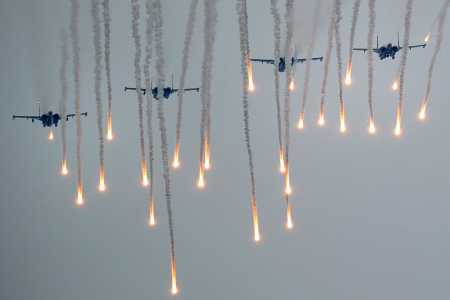 The September exercises occurred against the political backdrop of worsening relations between Russia and NATO countries since the 2014 Russian seizure of Crimea. Russia showcased integrated maneuvers, such as those seen in Crimea and Syria, as well as improved technologies involving drones and electronic warfare, demonstrating the transformation of its military over the past decade into a modern, sophisticated force capable of challenging NATO and the United States.
The September exercises occurred against the political backdrop of worsening relations between Russia and NATO countries since the 2014 Russian seizure of Crimea. Russia showcased integrated maneuvers, such as those seen in Crimea and Syria, as well as improved technologies involving drones and electronic warfare, demonstrating the transformation of its military over the past decade into a modern, sophisticated force capable of challenging NATO and the United States.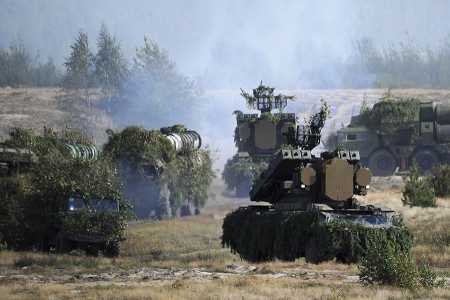 Zapad indicated a preparedness on the Russian side to raise the stakes in a conventional clash with NATO, meaning that NATO will need to evaluate whether it has the ability to maintain a deterrent with Moscow. The wake of the exercises could also bring attention to the possibility of renewing conventional arms control efforts between NATO and Russia.
Zapad indicated a preparedness on the Russian side to raise the stakes in a conventional clash with NATO, meaning that NATO will need to evaluate whether it has the ability to maintain a deterrent with Moscow. The wake of the exercises could also bring attention to the possibility of renewing conventional arms control efforts between NATO and Russia.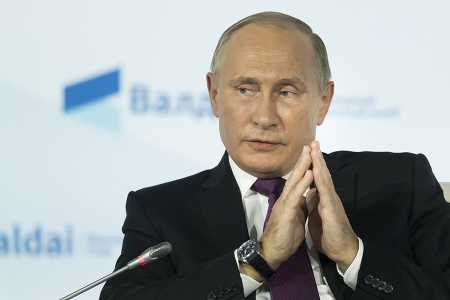 In the speech Oct. 19, Putin praised U.S.-Russian nuclear cooperation in the 1990s and early 2000s, but blamed the United States for derailing that progress. Addressing the annual meeting of the Valdai Discussion Club in Sochi, Putin cited the U.S. delay to 2023 in eliminating its chemical weapons stockpile, while noting that Russia completed its elimination Sept. 27. Further, he noted a shift and delays in the U.S. method for surplus plutonium disposal, which Moscow claims violates the 2000 Plutonium Management and Disposition Agreement (PMDA) between the two countries.
In the speech Oct. 19, Putin praised U.S.-Russian nuclear cooperation in the 1990s and early 2000s, but blamed the United States for derailing that progress. Addressing the annual meeting of the Valdai Discussion Club in Sochi, Putin cited the U.S. delay to 2023 in eliminating its chemical weapons stockpile, while noting that Russia completed its elimination Sept. 27. Further, he noted a shift and delays in the U.S. method for surplus plutonium disposal, which Moscow claims violates the 2000 Plutonium Management and Disposition Agreement (PMDA) between the two countries.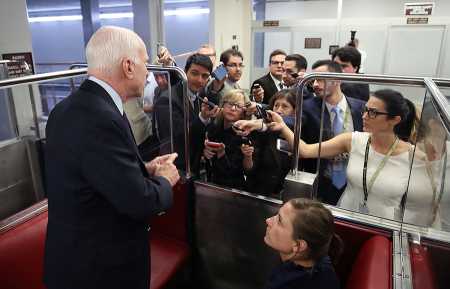 The Senate measure provides $65 million for a nuclear-capable, road-mobile ground-launched cruise missile (GLCM) with a range prohibited by the treaty. The House passed its version of the bill July 14, which authorizes spending $25 million for a non-nuclear intermediate-range GLCM, a system that would also violate the treaty. Further, the House bill would require the president to submit a report on Russian INF Treaty compliance within 15 months of enactment and would prohibit funding for an extension of the 2010 New Strategic Arms Reduction Treaty (New START) if Russia continues to violate the INF Treaty.
The Senate measure provides $65 million for a nuclear-capable, road-mobile ground-launched cruise missile (GLCM) with a range prohibited by the treaty. The House passed its version of the bill July 14, which authorizes spending $25 million for a non-nuclear intermediate-range GLCM, a system that would also violate the treaty. Further, the House bill would require the president to submit a report on Russian INF Treaty compliance within 15 months of enactment and would prohibit funding for an extension of the 2010 New Strategic Arms Reduction Treaty (New START) if Russia continues to violate the INF Treaty. Since 2014, the United States has accused Russia of violating its INF Treaty commitment “not to possess, produce, or flight-test” an intermediate-range GLCM. Those accusations expanded this year after the United States determined that Russia is fielding the noncompliant system. Moscow denies the allegations.
Since 2014, the United States has accused Russia of violating its INF Treaty commitment “not to possess, produce, or flight-test” an intermediate-range GLCM. Those accusations expanded this year after the United States determined that Russia is fielding the noncompliant system. Moscow denies the allegations.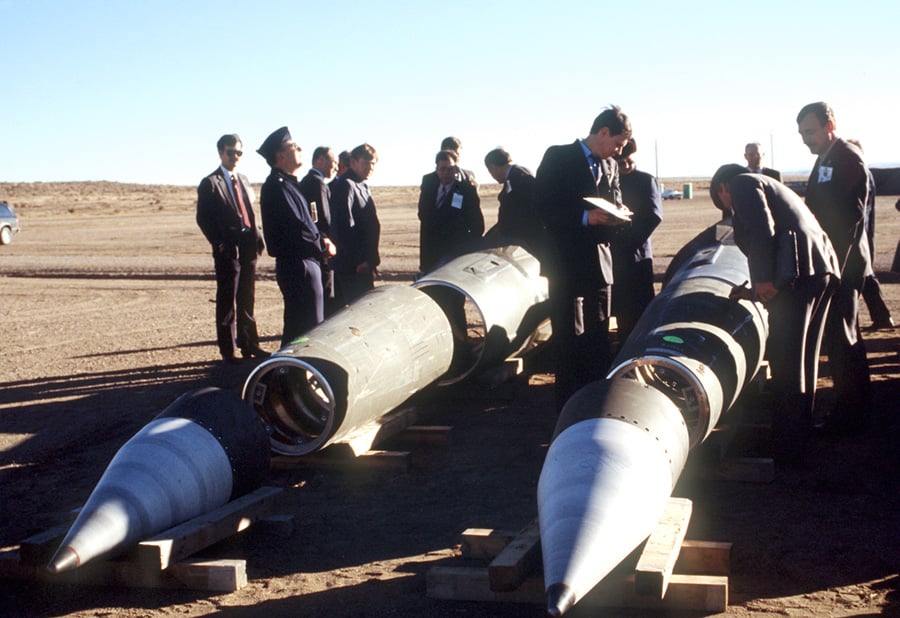 The House bill may exceed congressional authority by declaring that the United States would no longer bound by the treaty if Russia does not return to compliance after 15 months. Cotton’s office did not return a request for comment.
The House bill may exceed congressional authority by declaring that the United States would no longer bound by the treaty if Russia does not return to compliance after 15 months. Cotton’s office did not return a request for comment. Michèle Flournoy is co-founder and chief executive officer of the Center for a New American Security. She served as undersecretary of defense for policy from February 2009 to February 2012. The interview was conducted May 25 by Kingston Reif and Maggie Tennis. This transcript has been edited for length and clarity.
Michèle Flournoy is co-founder and chief executive officer of the Center for a New American Security. She served as undersecretary of defense for policy from February 2009 to February 2012. The interview was conducted May 25 by Kingston Reif and Maggie Tennis. This transcript has been edited for length and clarity.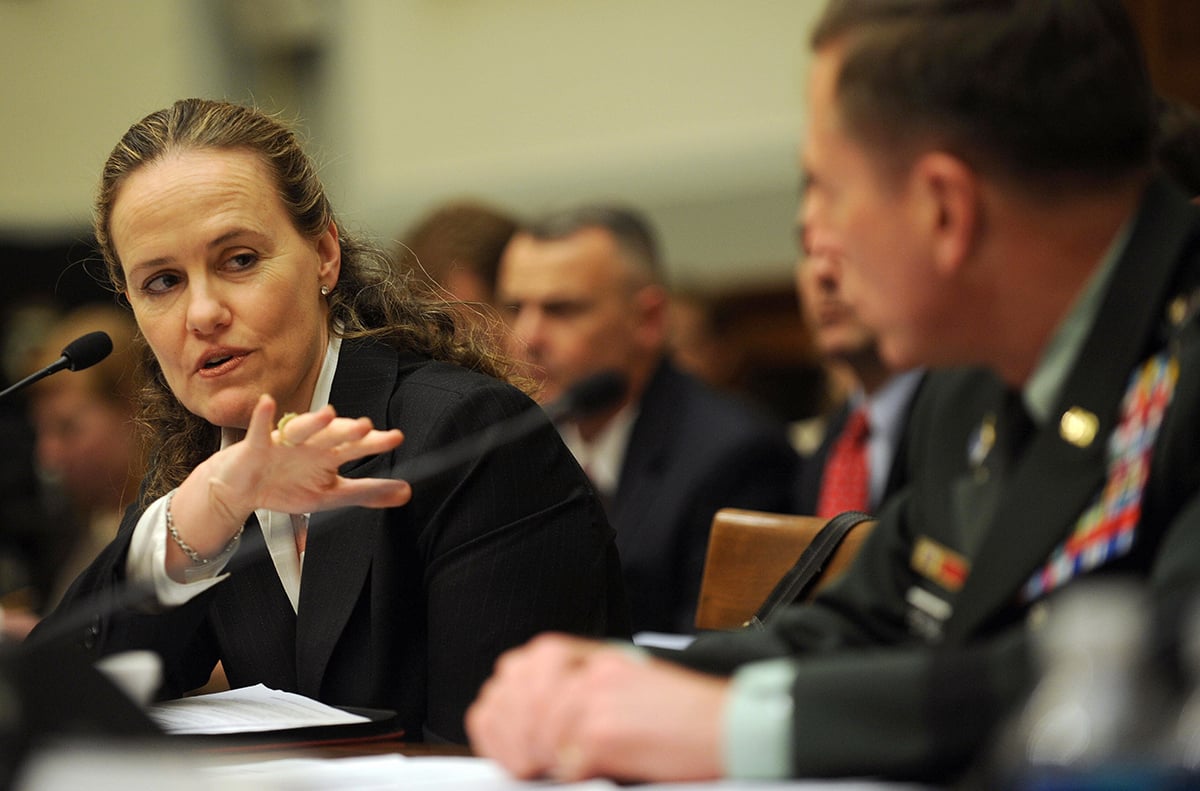 Shifting to another arms control agreement, the United States has accused Russia of deploying a ground-launched cruise missile with a range prohibited by the 1987 Intermediate-Range Nuclear Forces (INF) Treaty. Do you think it’s possible to convince Russia to return to compliance, and how should the United States respond to Russia’s alleged violation?
Shifting to another arms control agreement, the United States has accused Russia of deploying a ground-launched cruise missile with a range prohibited by the 1987 Intermediate-Range Nuclear Forces (INF) Treaty. Do you think it’s possible to convince Russia to return to compliance, and how should the United States respond to Russia’s alleged violation? The NPR will almost certainly review the existing U.S. nuclear force structure, which currently includes a triad of sea-, land-, and air-based delivery systems. In testimony to the Senate Armed Services Committee in January 2015, James Mattis, now the defense secretary, raised the question, “Is it time to reduce the triad to a dyad, removing the land-based missiles? This would reduce the false-alarm danger.” What contribution do you believe that intercontinental ballistic missiles (ICBMs) make to deterrence today? Has the rationale for the ICBM leg changed since the end of the Cold War?
The NPR will almost certainly review the existing U.S. nuclear force structure, which currently includes a triad of sea-, land-, and air-based delivery systems. In testimony to the Senate Armed Services Committee in January 2015, James Mattis, now the defense secretary, raised the question, “Is it time to reduce the triad to a dyad, removing the land-based missiles? This would reduce the false-alarm danger.” What contribution do you believe that intercontinental ballistic missiles (ICBMs) make to deterrence today? Has the rationale for the ICBM leg changed since the end of the Cold War?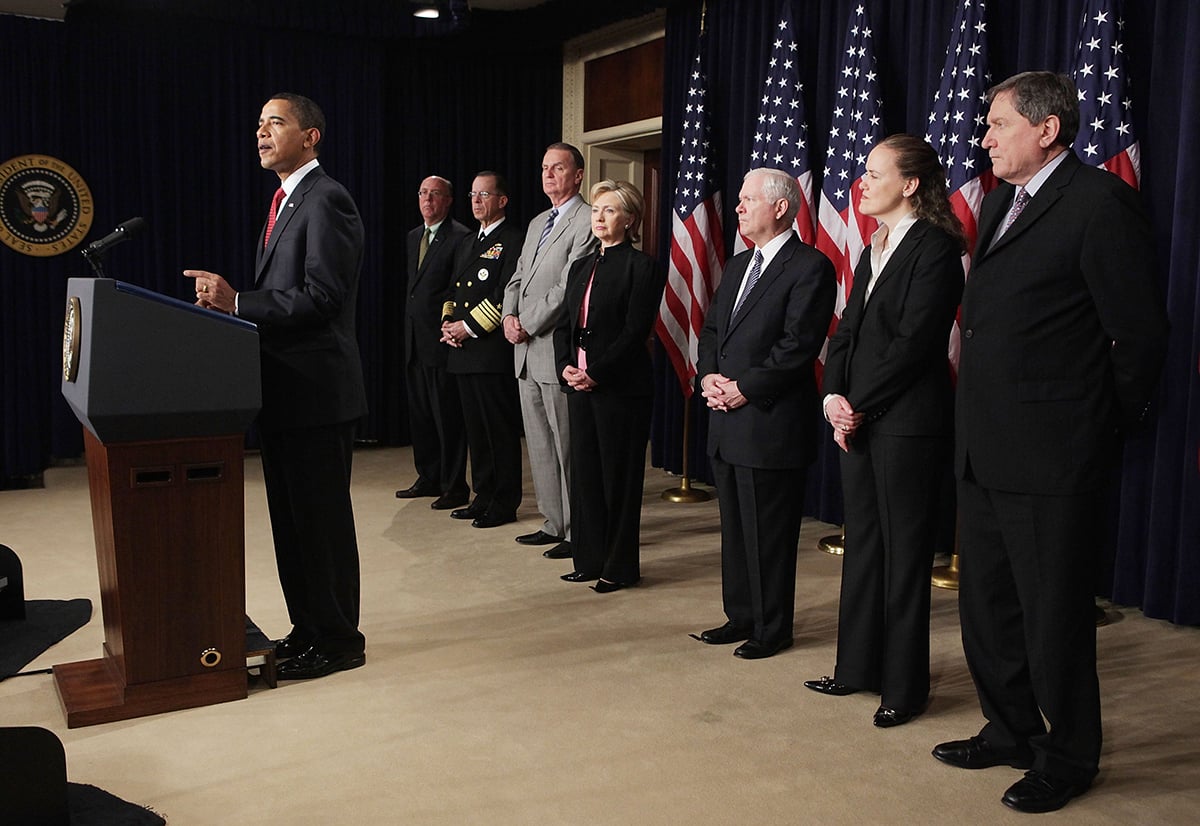 Can you envision a scenario where a president of the United States would make the most consequential decision a president will have ever made in a matter of minutes?
Can you envision a scenario where a president of the United States would make the most consequential decision a president will have ever made in a matter of minutes? Addressing the Arms Control Association’s annual meeting June 2, Ford said that the White House is considering a “very broad” range of options that go beyond just reconvening the Special Verification Committee, the body established by the treaty for dispute resolution. That group, convened most recently in November 2016, has failed to resolve the issue.
Addressing the Arms Control Association’s annual meeting June 2, Ford said that the White House is considering a “very broad” range of options that go beyond just reconvening the Special Verification Committee, the body established by the treaty for dispute resolution. That group, convened most recently in November 2016, has failed to resolve the issue.